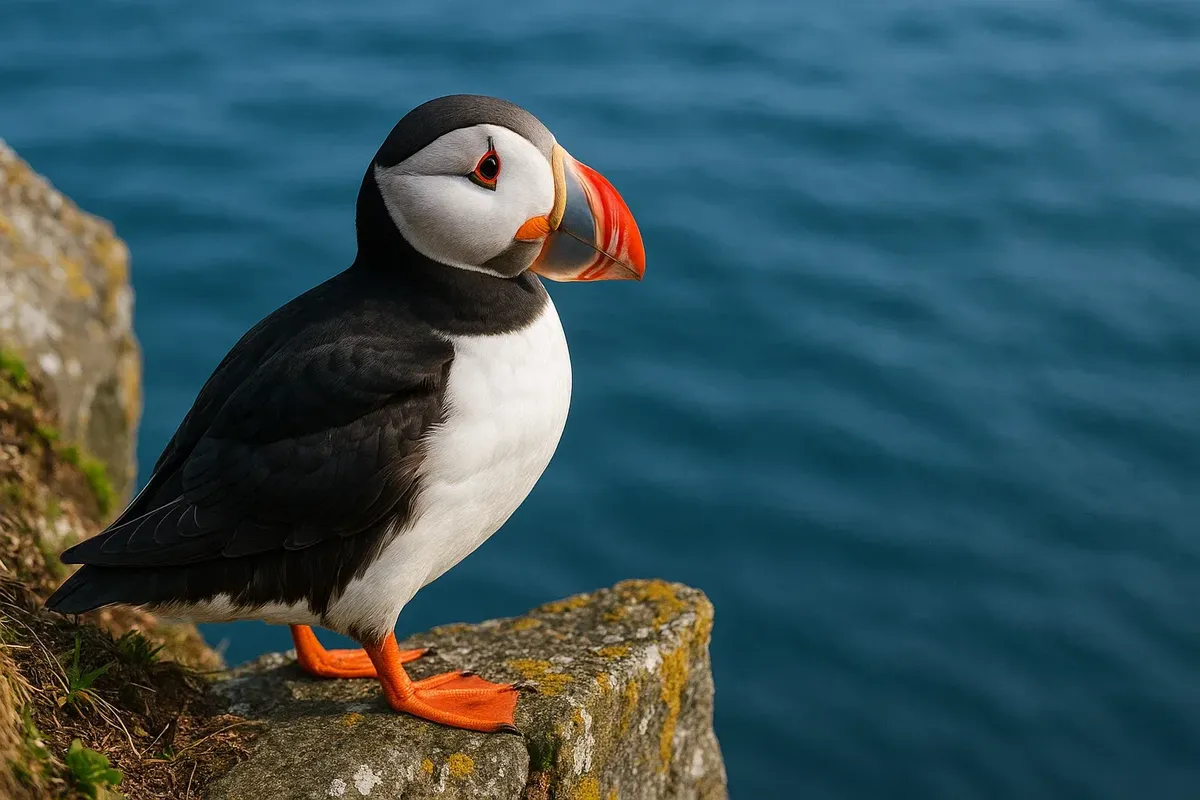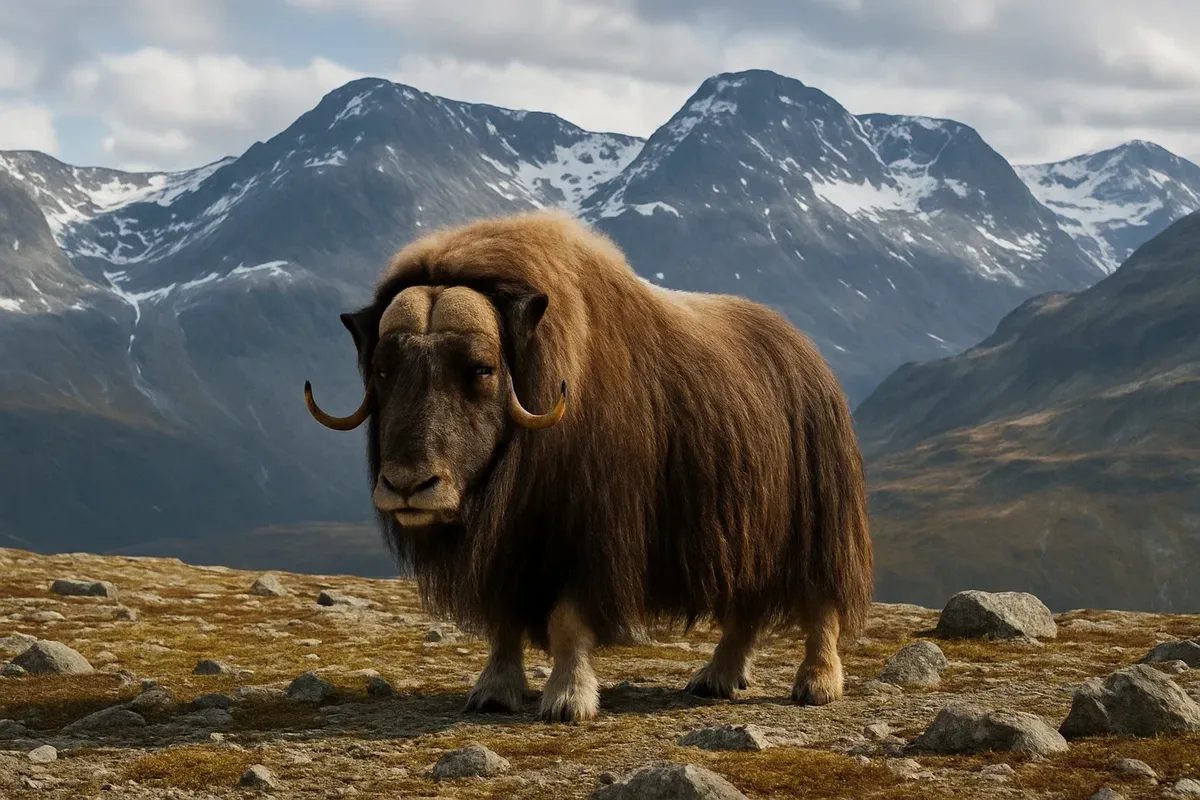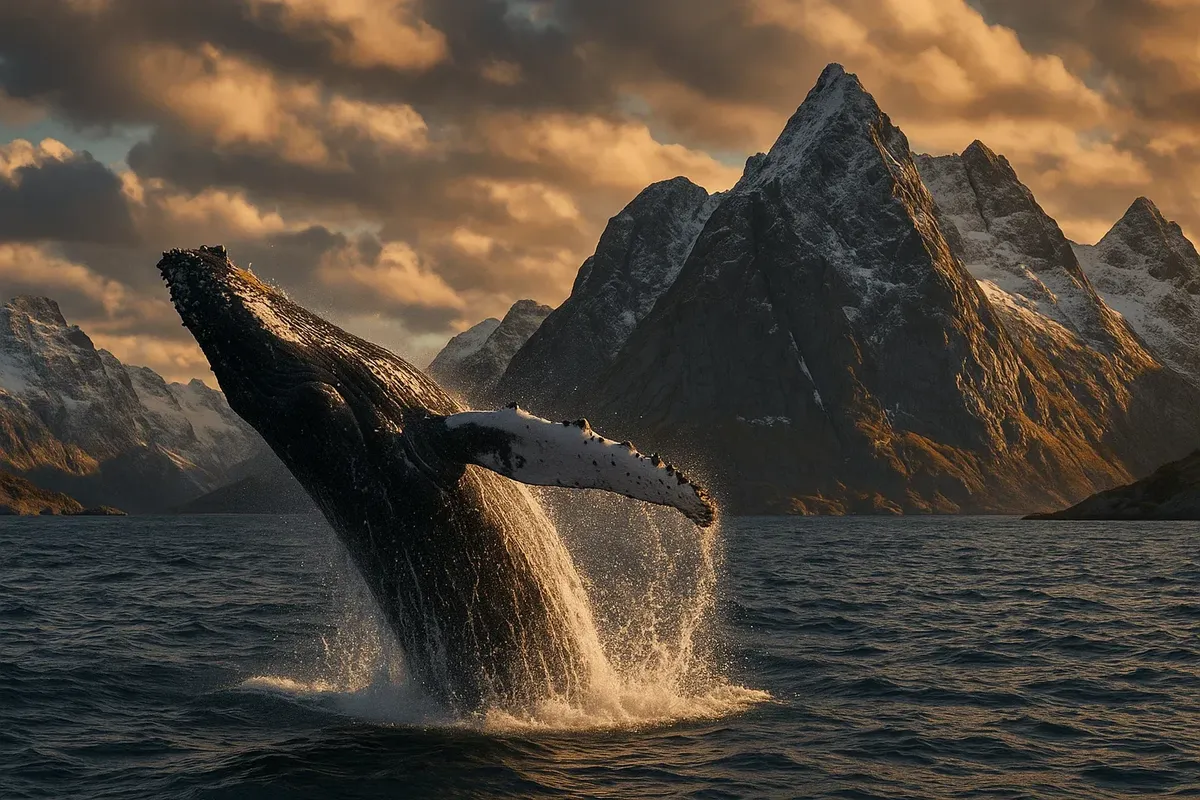📸 Through the lens of a wildlife photographer: 7 places in Norway for perfect animal shots
Norway is such a wonderful place for nature photographers. I can just imagine how beautiful it must be to photograph the animals and birds in this country, with its mountainous landscapes, endless fjords and abundant wildlife. If you're dreaming of taking stunning photos that will boost your portfolio, then head to one of these places and capture the moment through your lens!
📝 In this article, you'll discover:
- Where are the best places to photograph animals and birds in Norway.
- What types of animals and birds can be photographed in these places.
- Tips for successful photography.
📍 1. Runde Island – a place where seabirds really thrive!
You might have heard of Runde Island as 'Bird Island' – and that's because it's also known as 'Bird Island'! If you're a bird photographer, you'll be in your element here! You'll be thrilled by the huge colonies of puffins, kittiwakes and razorbills that you can get so close to. Just wait until you see the amazing shots you'll be able to take!
- 📅 Best time: May to July
- 🐦 If you're looking for something to photograph, why not try puffins, kittiwakes, razorbills or white-tailed eagles?
- Here's a helpful tip from our friend the photographer: if you want to catch the birds returning to their nests, try using a 200–400 mm lens and go out in the evening.

📍 2. Dovrefjell-Sunndalsfjella National Park — A journey in search of the elusive mouflon
I'm so excited to tell you that this is the only region in Europe where mouflons live in their natural habitat! Don't you think these powerful animals make the perfect shot against the backdrop of a rugged mountain landscape?
- 📅 Best time: June–September
- 🦬 If you're wondering what you could photograph, why not try musk oxen, reindeer, arctic foxes or golden eagles?
- Here's a helpful tip from our friend the photographer: if you're looking to get that perfect close-up shot, try using a telephoto lens (around 400 mm or more) and keep about 200 metres away. If you're looking for the best lighting, then I would recommend going in the early morning or evening.

📍 3. Come and join us for an unforgettable experience as we explore the beautiful Lofoten Islands and get up close and personal with the majestic whales!
Lofoten is a place like no other, with its stunning landscapes and diverse marine life. Here, you can get up close and personal with whales, killer whales and flocks of seabirds, all set against the backdrop of our stunning cliffs.
- 📅 Best time: From November to February, we can all enjoy spotting whales. Then, from May to August, it's the birds' turn to delight us.
- 🐋 So, what can you photograph? Well, humpback whales, killer whales, dolphins and puffins, to name a few!
- Here's a helpful tip from our friend the photographer: to get those amazing shots of the whales jumping out of the water, try using continuous shooting and a short exposure setting.

📍 4. The Glomma River Delta (Øyeren) is a wonderful place for water birds.
Lake Øyeren, the largest inland delta lake, is a haven for birds, with swans, ducks, geese and even rare waders flitting around.
- 📅 Best time: The best times to come and have a look at our beautiful birds are from April to June and from September to October, when they're migrating.
- 🦢 We'd love you to come and take some photos of swans, grey geese, mallards, cranes and herons.
- Here's a helpful tip from our friend the photographer: if you want to catch some beautiful birds in their natural habitat, why not set up a hide near the water and get up early in the morning to see them at their best?
📍 5. Welcome to Hardangervidda, a magical place where wild reindeer roam free on a beautiful plateau.
Welcome to Hardangervidda, Europe's largest mountain plateau, where you'll find one of the largest populations of wild reindeer. You are going to love how you can take beautiful, atmospheric shots here against a backdrop of endless expanses.
- 📅 Best time: July–September
- 🦌 What to photograph: reindeer, lemmings, arctic foxes.
- Here's a helpful tip from our friend the photographer: when you're out and about, it's always a good idea to bring a tripod and a 400–600 mm telephoto lens. Reindeer are cautious creatures, so it's important to be patient and move slowly.
📍 6. Femunsmarka National Park is a special place where you can experience the beauty of moose and the enchanting atmosphere of taiga.
Femunsmarka is a land of wild forests and countless lakes, where the air is fresh and the days are long. It's the perfect place to capture the beauty of moose, beavers, and rare forest birds.
- 📅 Best time: June to August
- 🦌 What could you possibly photograph during this lovely season? Moose, beavers, capercaillies, black grouse, eagle owls... the list is endless!
- Hey guys, here's a little tip from one photographer to another: if you're trying to take a photo without anyone knowing, try using silent shooting mode! You'll be in for a treat, as the best time is at dawn and late evening, when moose and beavers come out to the water.
📍 7. A trip to the Spitsbergen Archipelago (Svalbard) is the perfect way to experience the wonders of the Arctic!
Welcome to the northernmost point of Europe! Here, the harsh Arctic reigns supreme, but we're sure you'll find it fascinating. I just know you're going to love the chance to take some amazing photos of polar bears, walruses, arctic foxes and thousands of birds!
- 📅 Best time: June to August
- 🐻❄️If you're wondering what you could photograph, why not try polar bears, walruses, arctic foxes or white ptarmigans?
- Photographer's tip: For your own safety, it's best to shoot from a ship or with a guide, use 400–600 mm lenses and keep your distance.
📸 Here are some tips for photographing animals and birds in Norway:
- I would really recommend using telephoto lenses (200–600 mm) to keep a safe distance, if you don't mind me suggesting.
- If you're after the best lighting, then early morning or in the evening are the best times (this is also known as the 'golden hour').
- Take your time, and be patient. If you can, try to keep still and calm, and watch the animals around you.
- Go for a series of shots to capture that perfect moment!
- Please think about what the weather's going to be like and make sure you pick the right clothes and protection for your equipment.
- Please, if you're out in nature, try to be respectful and don't disturb the animals or leave litter behind.
I just love photographing wild animals in their natural habitat. It's such an incredible experience and a real adventure in search of unique shots. I can assure you that each of these places is going to give you some absolutely stunning photos and memories that you'll never forget. You'll get to experience the beauty of nature at its best and create unforgettable memories.
Grab your camera, set off on a journey through Norway, and capture moments that will make your photo portfolio unique!





1 comment
Log in to leave a comment